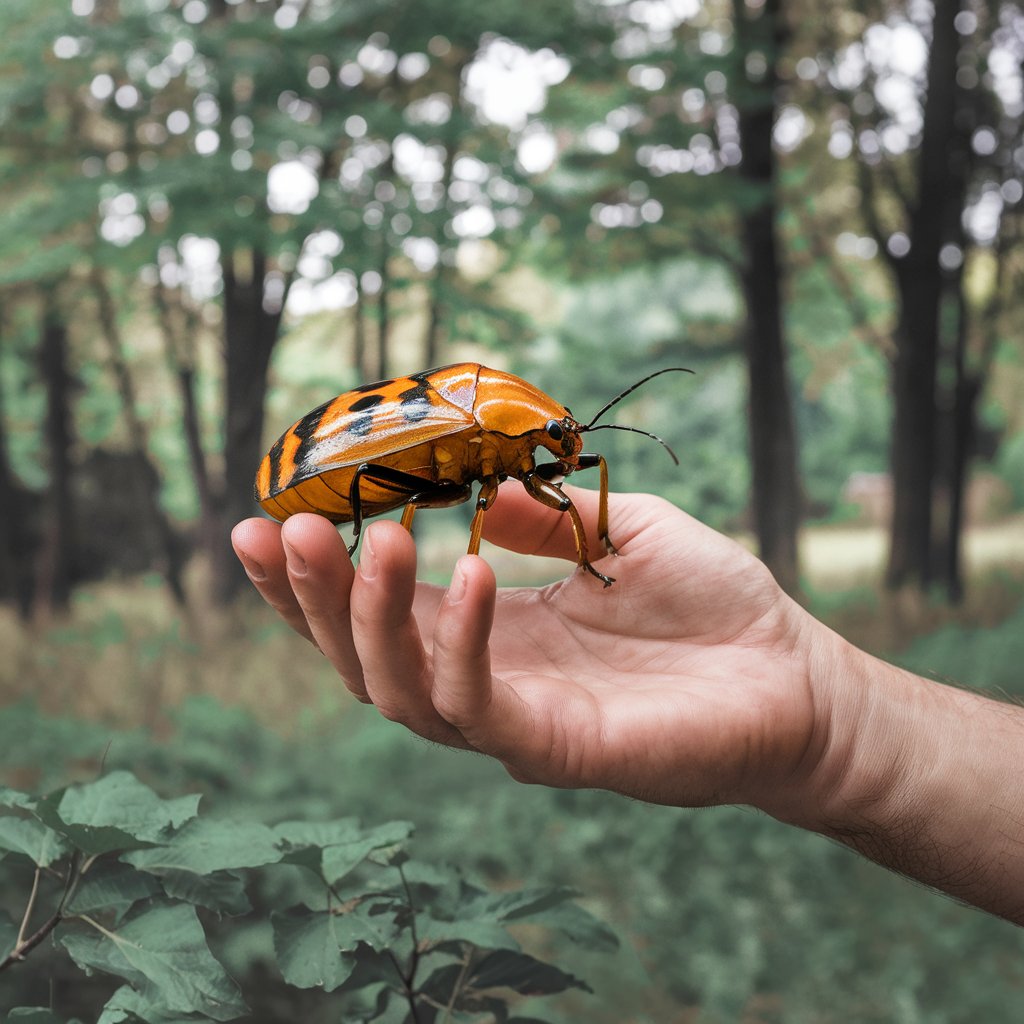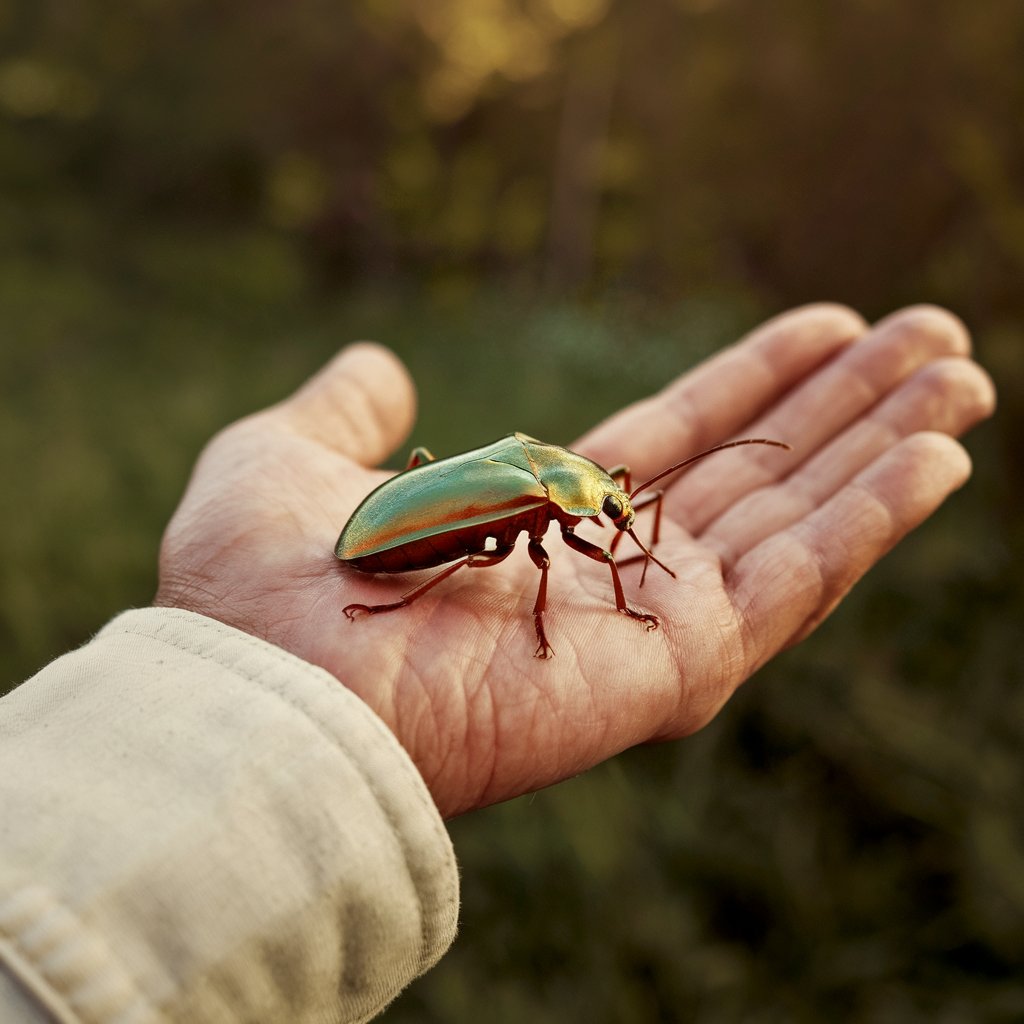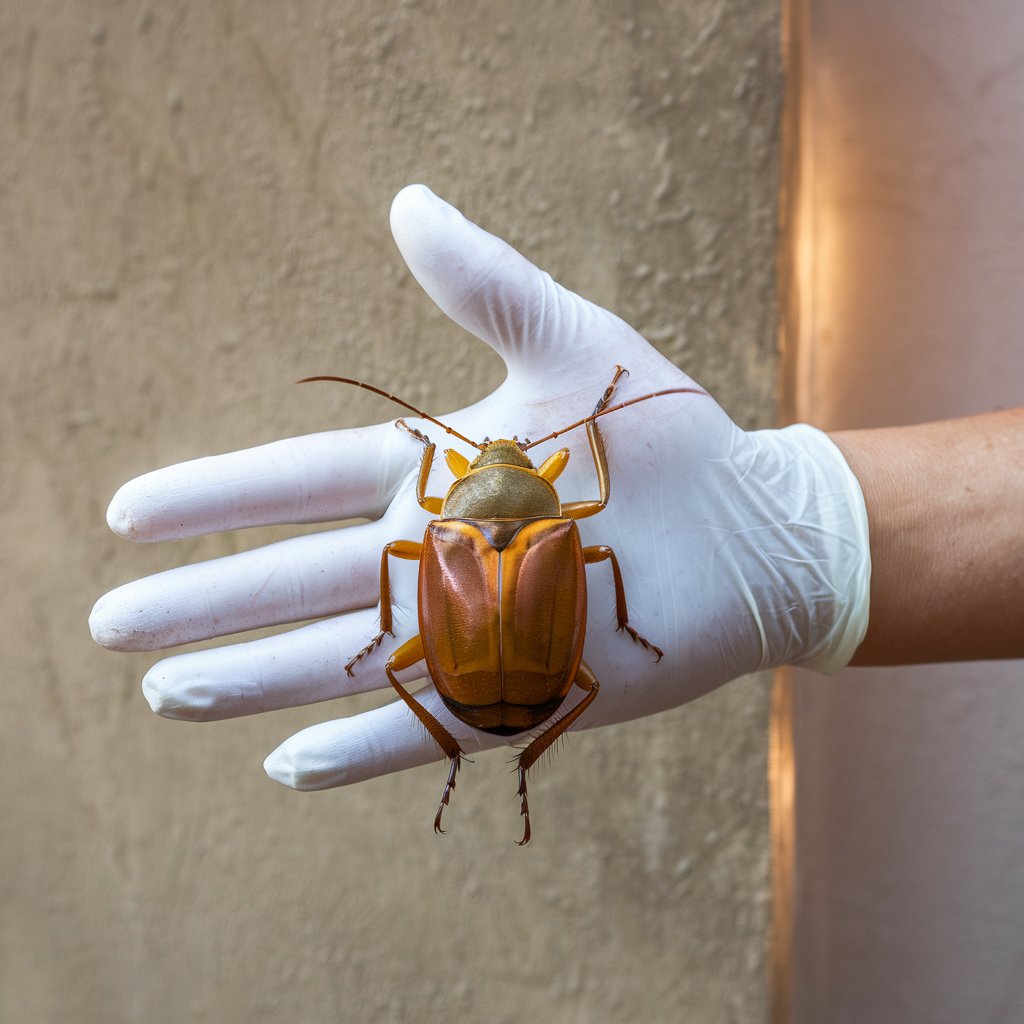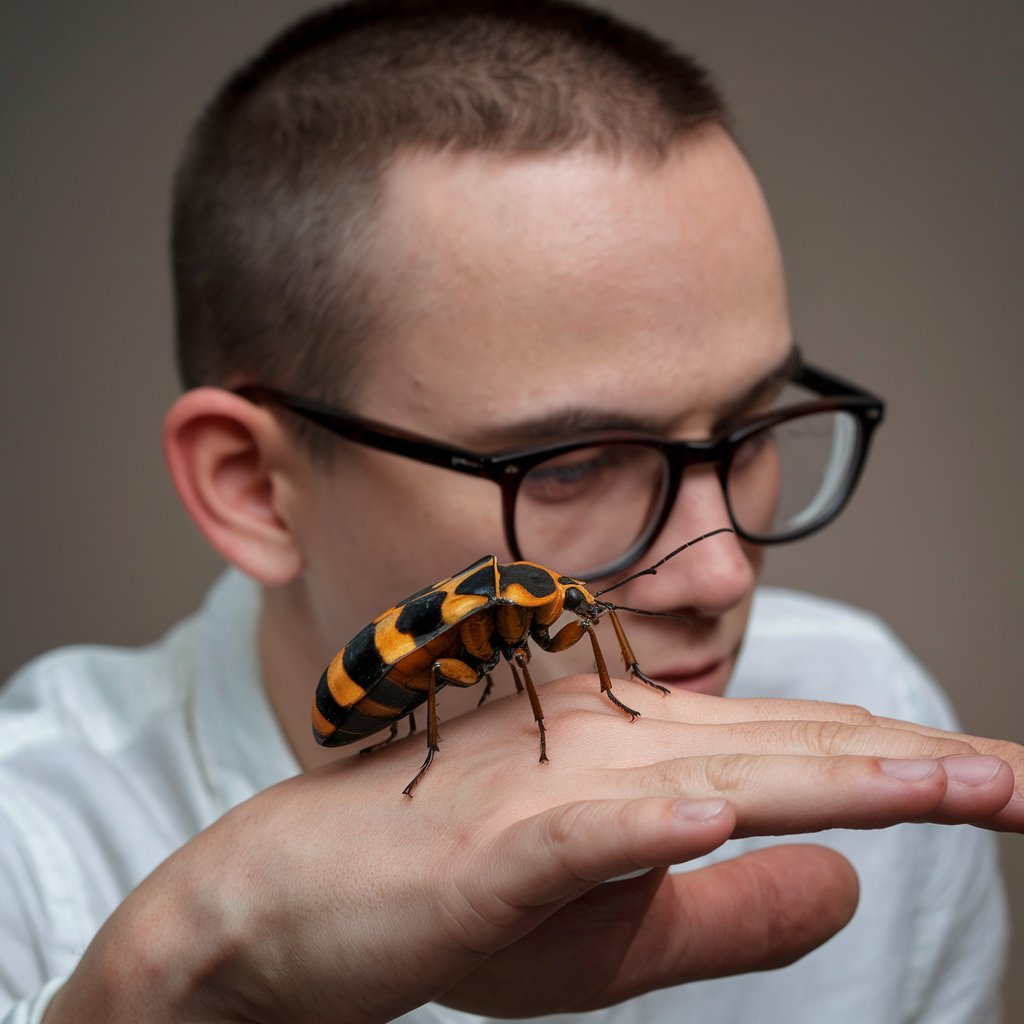As the warm months of summer arrive, the presence of June bugs becomes more apparent, especially with their large, clumsy flight and attraction to bright lights. You might have noticed these insects flying toward your face or crashing into your car windows and wondered: do June bugs attack humans?
In this article, we will explore everything you need to know about June bugs, their behavior, their role in the ecosystem, and why they’re not as dangerous as they might seem. By the end of this guide, you’ll have a deeper understanding of these fascinating beetles and their natural behavior, ensuring that you don’t fear them unnecessarily.
Certainly! Below is a table summarizing the key facts and figures about June Bugs, including their lifecycle, physical features, behavior, and ecological benefits:
| Fact/Category | Details |
|---|---|
| Scientific Name | Phyllophaga (Genus) |
| Family | Scarab Beetle Family |
| Common Names | June Bugs, May Beetles |
| Size | 1 inch (2.5 cm) long, depending on the species |
| Coloration | Reddish-brown, black, or greenish |
| Lifespan (Adult Stage) | 3-6 weeks |
| Lifecycle Duration | 1-3 years (from egg to adult) |
| Primary Attraction | Artificial Lights (positive phototaxis) |
| Feeding Habits (Adults) | Feed on plant material like leaves and grass |
| Feeding Habits (Larvae/Grubs) | Feed on plant roots and decaying organic matter |
| Flight Pattern | Erratic, clumsy flight patterns |
| Mating Season | Late spring to early summer |
| Predators | Birds, amphibians, small mammals |
| Ecological Role | Soil aeration, nutrient mixing, food source for predators |
| Potential Damage (Grubs) | Minor root damage to plants |
| Common Locations | Gardens, parks, fields, and green spaces in temperate regions |
| Natural Pest Control | Larvae help control root-feeding pests in the soil |
| Human Interaction | Non-aggressive, accidental collisions due to flight patterns |
| Pet Impact | Generally safe for pets, may cause mild digestive upset if ingested |
| Preventive Measures | Use yellow/amber light bulbs, eco-friendly pest control (neem oil, beneficial nematodes) |
| Health Risks | No known diseases transmitted to humans |
What Are June Bugs?
June bugs, also known as May beetles, belong to the scarab beetle family, with the scientific name Phyllophaga. These beetles are easily recognizable by their large, glossy, and shiny appearance. They are found in temperate regions, particularly in North America, where they become most noticeable during the late spring and early summer months. You might see them swarming around streetlights, porch lights, or car headlights as night falls, creating an almost eerie scene.
These beetles are most prominent in gardens and green spaces, where they play an important role in the ecosystem. They vary in size, often reaching up to 1 inch in length, and feature a reddish-brown, black, or even greenish color, depending on the species.

June Bug Lifecycle
The lifecycle of June bugs spans several stages that help explain their existence and behavior:
- Egg: In late spring, adult beetles lay their eggs in soil, often in lawns, fields, or gardens.
- Larvae (Grubs): Once the eggs hatch, they become larvae or grubs, which feed on plant roots and other organic material in the soil.
- Pupa: After feeding and growing for several months, the larvae enter the pupa stage, where they undergo transformation into adults.
- Adult: The adult beetles emerge in the late spring or early summer and are the most visible stage of the June bug lifecycle. These adults mate, reproduce, and start the cycle over again.
Do June Bugs Attack Humans?
Despite their large size and the frequent collision with human bodies, June bugs do not attack humans. They are non-aggressive insects with no intention of causing harm. The confusion arises because their behavior, particularly when they fly toward humans, may seem threatening or startling, but it’s not driven by hostility.
Misinterpretation of Behavior
To understand why June bugs sometimes appear to “attack” humans, it’s essential to examine their behavior more closely.
- Erratic Flight Patterns: June bugs are known for their clumsy flying patterns. Unlike other insects that have graceful flight mechanics, June bugs often seem to flounder in the air. This is primarily due to their relatively large size compared to their wing surface, making them poor fliers. Their erratic flight can result in accidental collisions with people or objects.
- Positive Phototaxis: One of the main reasons for the frequent collisions with humans is their attraction to light. June bugs are positively phototactic, meaning they are naturally drawn to artificial lights such as streetlights, porch lights, and car headlights. When you stand near a light source at night, a June bug may fly toward you and accidentally bump into you as it tries to get closer to the light. This behavior is in no way an attack, but rather the result of an innate attraction to the light.
- Inadvertent Collisions: As June bugs are poor fliers, they often collide with humans or objects during their flight. These accidents are random, with no malicious intent behind them. When they fly into you, it’s simply a result of their inability to navigate smoothly toward their target light.
Understanding June Bug Behavior
Now that we know June bugs do not attack humans, let’s look at their natural behavior and what they’re really up to when they’re buzzing around.
- Attraction to Light: The most distinctive behavior of June bugs is their attraction to bright artificial lights. This phenomenon, called positive phototaxis, is common in many nocturnal insects. June bugs are not trying to attack; they are simply navigating towards light sources. This is a survival mechanism related to their mating habits. Many male beetles are attracted to the light to find potential mates, while others use the light to signal to females.
- Chewing Mouthparts: June bugs feed primarily on plant material. Their chewing mouthparts are designed to break down leaves, grass, and other vegetation. During the adult stage, they are particularly interested in feeding on foliage, although their feeding habits are not harmful enough to cause significant damage to most plants.
- Soil Aeration: June bug larvae (grubs) are a vital part of soil aeration. As they feed on plant roots and organic material in the soil, their movement helps loosen soil and mix nutrients, making the ground healthier and more fertile. This underground activity benefits gardens and agricultural fields by improving soil structure and encouraging better plant growth.
- Non-Aggressive Behavior: Even though June bugs are large and often clumsy in flight, they do not exhibit aggressive behavior. They do not bite, sting, or chase humans. In fact, their behavior revolves mainly around mating and feeding, both of which are essential for completing their life cycle.

Are June Bugs Dangerous to Humans?
It’s natural to wonder if these large beetles could pose a threat to us. Fortunately, June bugs are not dangerous to humans.
Bites and Stings
- Do June bugs bite humans? No. June bugs do not have the ability to bite people. Their chewing mouthparts are adapted to feed on plant material, such as leaves and grass. They are not designed to pierce human skin.
- Do June bugs sting? Similarly, June bugs do not sting. Unlike bees or wasps, they do not possess the ability to inject venom into humans. Any contact with a June bug is harmless.
Disease Transmission
June bugs are not known to carry or transmit diseases to humans. Unlike mosquitoes or ticks, which can be vectors for diseases, June bugs do not play a role in spreading illness. However, it’s always a good idea to wash your hands if you’ve been handling or touching insects, as some insects may carry bacteria from the environment.
Allergic Reactions
While allergic reactions to June bugs are rare, it’s possible for someone to have a mild reaction after coming into contact with one. This could include symptoms like itching, redness, or swelling at the site of contact. In most cases, these symptoms are not serious and resolve on their own.
Impact on Pets
- Pets and June Bugs: June bugs are generally not harmful to pets. However, pets like dogs or cats may become curious and try to catch or eat them. If a pet eats a June bug, it could cause mild digestive upset due to the hard exoskeletons of the beetles. It’s always best to monitor pets if they show an interest in eating insects.
- Wildlife: On the other hand, June bugs play an important role in the food chain as a food source for a variety of predators, including birds, amphibians, and small mammals. These beetles support local wildlife populations by providing nourishment to many species.
Why Are People Afraid of June Bugs?
Many people experience a sense of unease or even fear when encountering June bugs. This fear, known as entomophobia, is understandable, but let’s examine the reasons behind it:
- Surprise Encounters: The sudden presence of a large June bug flying toward you can be startling. Their erratic flight and tendency to collide with humans can trigger a fear response, even though they are harmless.
- Cultural Influence: In some cultures, insects like June bugs are often portrayed as ominous or frightening, adding to the fear many people feel when encountering them.
- Size and Appearance: With their large bodies, shiny exoskeletons, and erratic flight, June bugs can appear intimidating, especially to people who aren’t used to encountering large beetles. Their unexpected presence at night, particularly around lights, can amplify their perceived menacing appearance.
Benefits of June Bugs in the Ecosystem
While June bugs might seem like a nuisance, they play an important role in the ecosystem.
- Soil Health: The larvae of June bugs help aerate the soil. As they burrow and feed on organic material, they improve the structure and quality of the soil. This process allows for better water retention, root growth, and nutrient mixing, all of which are beneficial for plant health.
- Biodiversity: June bugs contribute to local biodiversity by serving as a food source for various predators, including birds, mammals, and amphibians. Without them, many of these animals would have a harder time finding sufficient nourishment.
- Pest Control: The larvae of June bugs also feed on other root-feeding pests in the soil, providing natural pest control in gardens and agricultural fields.

How to Deal with June Bugs
If you’re finding June bugs becoming a nuisance, here are some ways to manage them without harming the environment:
- Reduce Light Attraction: Since June bugs are attracted to bright lights, consider using yellow or amber light bulbs for outdoor lighting. These bulbs are less likely to attract them.
- Seal Entry Points: Close windows and doors at night to prevent June bugs from flying indoors. Ensure that window screens are intact to keep them from entering your home.
- Natural Pest Control: Use eco-friendly methods like neem oil and beneficial nematodes to keep June bug larvae from damaging your garden or lawn. These natural solutions are safe for humans, pets, and the environment.
- Release Dead Bugs: If a June bug accidentally enters your home, gently remove it and release it outside. This helps you avoid harming the beetle while ensuring it stays out of your living space.

FAQs
What happens if you get bit by a June bug?
June bugs don’t bite, so there’s no need to worry about that. However, their spiny legs can poke you if they come into contact with your skin.
Are June bugs poisonous to humans?
June bugs are harmless to humans and do not bite or sting. They may be an annoyance due to their attraction to lights, but they are not dangerous.
Do June bugs get stuck in your hair?
Yes, June bugs can get tangled in your hair, but it’s not common. There’s no need to worry about needing a haircut just because of one.
Are June bugs evil?
June bugs are not evil, though their nighttime swarming around lights can be unsettling. They’re harmless but can be a nuisance when they invade homes.
What happens if a June bug gets in your ear?
If a June bug gets in your ear, it’s important to remove it carefully to avoid damaging the eardrum. If you can’t remove it, seek medical help immediately.
Is it OK to eat a June bug?
Historically, people like Native Americans roasted June bugs for their nutritional value. They’re rich in protein and other nutrients and can be eaten if prepared properly.
What is the lifespan of a June bug?
June bugs typically live less than a year as adults, emerging in late spring to lay eggs and dying by the end of summer.
Are June bugs rare?
June bugs are quite common, with over 400 species found in North America alone. They are widespread, particularly in eastern parts of the continent.
What do June bugs turn into?
June bugs evolve from larvae to pupae, and eventually into adult beetles, emerging in the summer to mate and continue their life cycle.
Can bugs lay eggs in your hair?
Certain pests like lice can lay eggs in your hair, but June bugs don’t do this. Lice eggs, called nits, stick to the hair near the scalp.
Why do June bugs scream?
When disturbed, June bugs can make a hissing sound, created by air being pushed through their wings, similar to the hissing of a bat.
What is a June bug good for?
June bugs help cycle nutrients in ecosystems by feeding on grass roots and providing food for other animals when they are consumed as larvae or adults.
Do June bugs have worms?
June bug larvae, known as grubs, look like fat, white worms with brown heads. These grubs feed on roots and can be found underground.
Do June bugs have amniotic eggs?
Unlike reptiles and birds, June bugs don’t lay amniotic eggs. They lay eggs with a hard outer shell that protect the developing larvae.
Why is it called a June bug?
June bugs get their name because they emerge from the soil in late spring or early summer, with their peak activity occurring in June.
Are June bugs scary?
While June bugs aren’t dangerous, their erratic flying and swarming around lights can make them seem scary, especially at night.
Is June Bug a nickname?
“Junebug” is a common nickname, often used to refer to someone born in June or as an affectionate term for someone cute.
What is the myth about June bugs?
A popular myth about June bugs is that they are attracted to the moon, but in reality, they are drawn to artificial lights at night.
Are June bugs poisonous?
No, June bugs are not poisonous. They don’t bite, sting, or transmit diseases, although they can damage plants and lawns.
What are the parasites in June bugs?
Some parasitic insects, like the Scolia dubia wasp, target June bug larvae (grubs) by laying eggs inside them, causing the larvae’s eventual demise.
Do June bugs taste bad?
June bugs are said to have a savory, slightly salty taste, which some people find enjoyable, especially when paired with cheese.
Why do June bugs turn upside down?
When June bugs die, their body becomes top-heavy due to the loss of blood flow, causing them to flip onto their backs.
Final Verdict: Should You Fear June Bugs?
In conclusion, June bugs are not dangerous to humans. While their erratic flight and attraction to lights might make them seem intimidating, they are non-aggressive, and their behavior is merely a reflection of their natural instincts to seek mates and feed. Rather than fearing these beetles, it’s best to appreciate their role in the ecosystem.
June bugs contribute to soil health, support biodiversity, and act as a food source for many predators. They play a vital part in the food chain and offer several ecological benefits. If you encounter them, rest assured that they are simply going about their business.
Read more knowledgeable blogs on Flowy Magazine

James Clair is a passionate writer and researcher with a deep fascination for animal behavior and its intricate connection to human life. With a background in [relevant field of study, e.g., zoology, psychology, ethology], James has spent years studying the natural world, focusing on how animals’ actions and instincts impact human emotions, behavior, and society.
His expertise in [specific topics or regions of focus, e.g., canine psychology, animal communication, wildlife conservation] has led to numerous published works and collaborations with renowned researchers and institutions. Through his work at Flawy Magazine, James aims to bridge the gap between scientific research and public understanding, offering insightful, accessible articles that explore the complex relationship between humans and animals.
When he’s not writing, James enjoys [personal hobbies or interests, e.g., hiking in nature, volunteering at animal shelters, photography] and is an advocate for [cause or charity related to animals or conservation]. His mission is to inspire readers to see animals not just as companions or creatures of the wild, but as beings whose behavior holds valuable lessons for us all.









